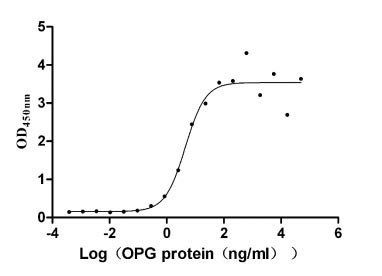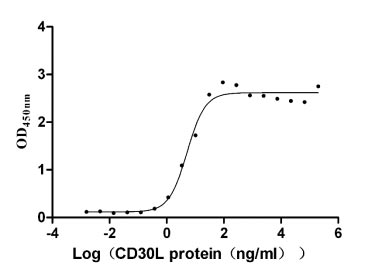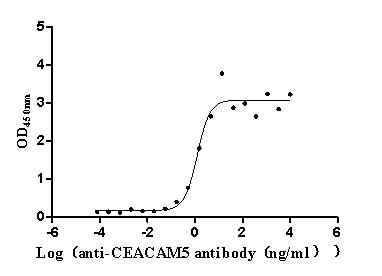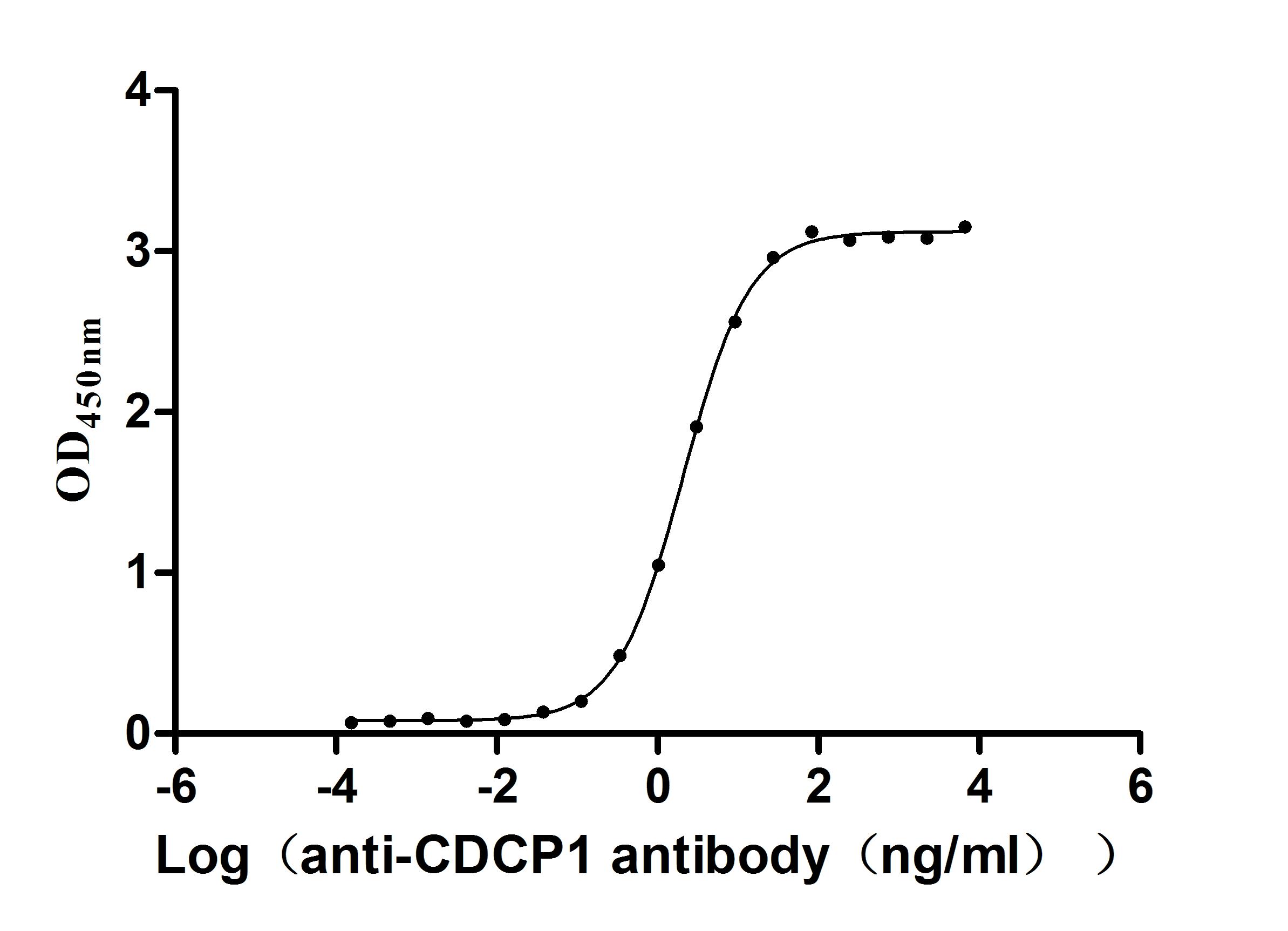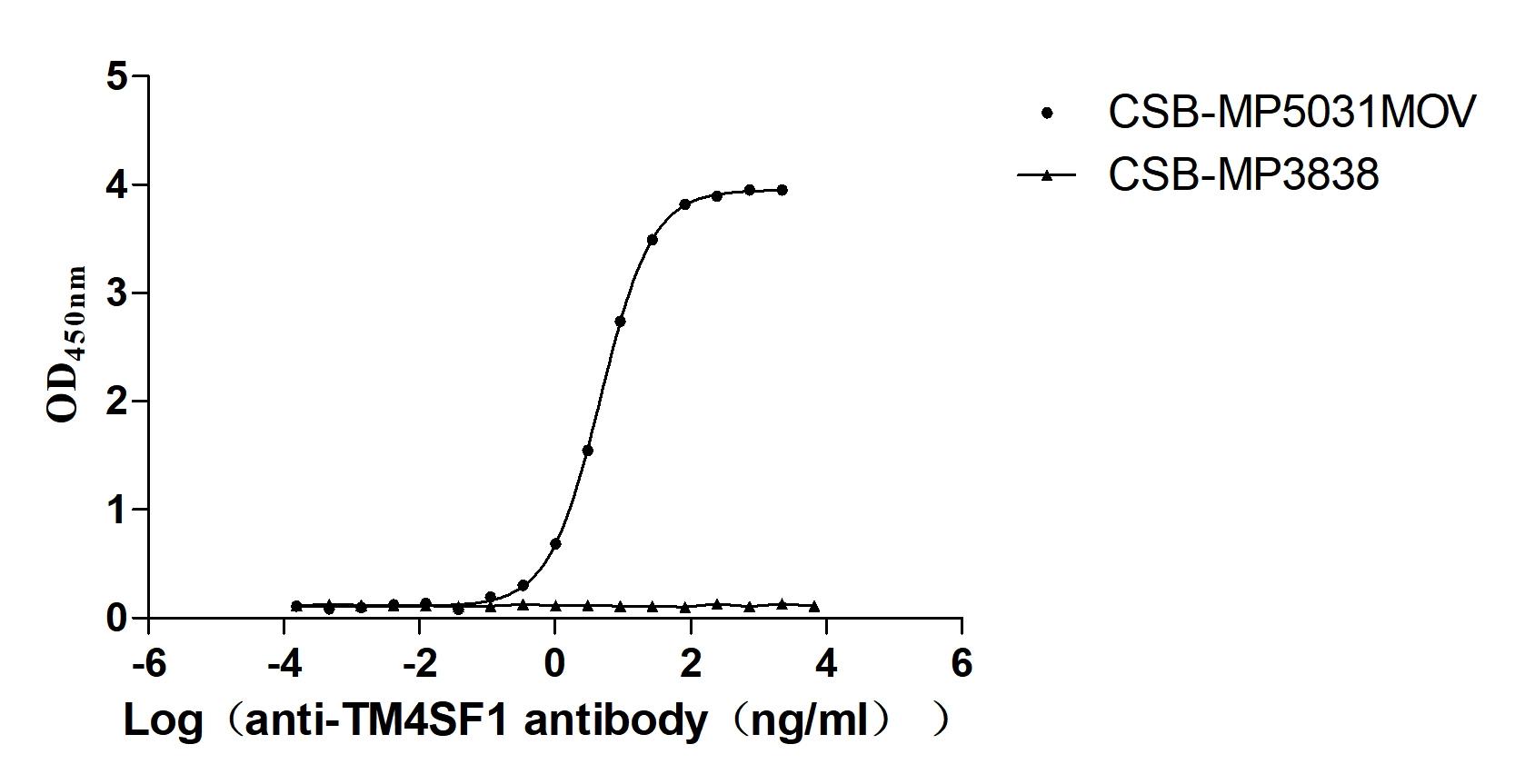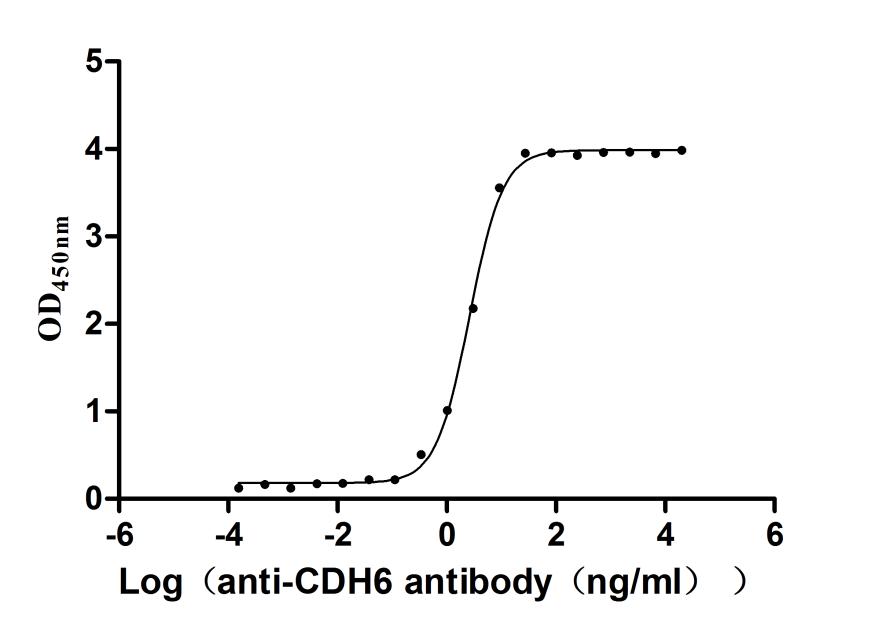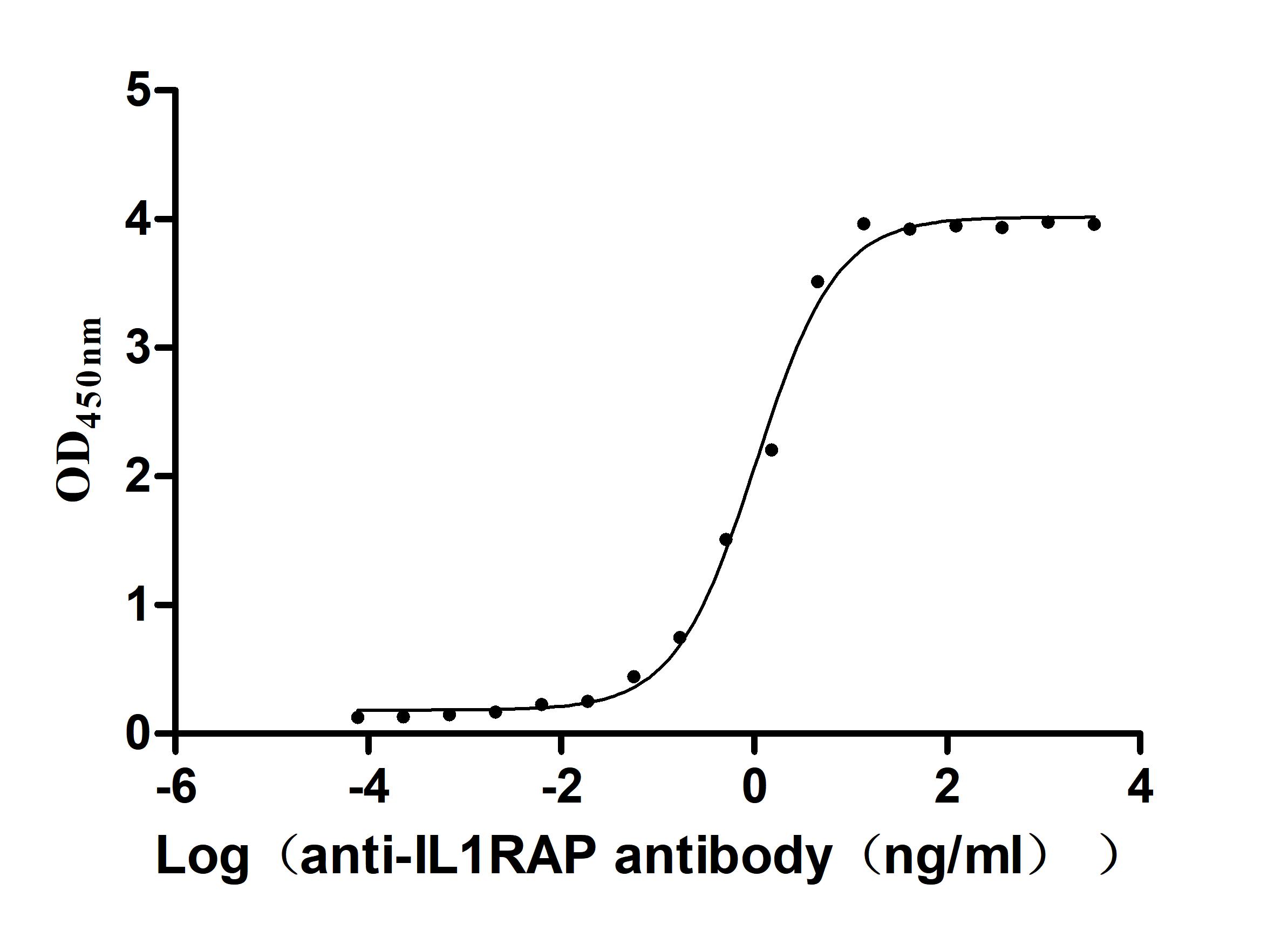Recombinant Human Voltage-dependent L-type calcium channel subunit beta-2 (CACB2)
-
中文名稱:
-
貨號(hào):CSB-EP804482HU-B
-
說(shuō)明書:
-
規(guī)格:
-
來(lái)源:E.coli
-
共軛:Avi-tag Biotinylated
E. coli biotin ligase (BirA) is highly specific in covalently attaching biotin to the 15 amino acid AviTag peptide. This recombinant protein was biotinylated in vivo by AviTag-BirA technology, which method is BriA catalyzes amide linkage between the biotin and the specific lysine of the AviTag.
-
其他:
產(chǎn)品詳情
-
純度:>85% (SDS-PAGE)
-
基因名:CACB2
-
Uniprot No.:
-
別名:Voltage-dependent L-type calcium channel subunit beta-2; CAB2; Calcium channel voltage-dependent subunit beta 2; Lambert-Eaton myasthenic syndrome antigen B; MYSB; CACNB2 CACNLB2 MYSB
-
種屬:Homo sapiens (Human)
-
蛋白長(zhǎng)度:Full Length
-
表達(dá)區(qū)域:1-660
-
氨基酸序列MVQRDMSKSPPTAAAAVAQEIQMELLENVAPAGALGAAAQSYGKGARRKNRFKGSDGSTSSDTTSNSFVRQGSADSYTSRPSDSDVSLEEDREAVRREAERQAQAQLEKAKTKPVAFAVRTNVSYSAAHEDDVPVPGMAISFEAKDFLHVKEKFNNDWWIGRLVKEGCEIGFIPSPVKLENMRLQHEQRAKQGKFYSSKSGGNSSSSLGDIVPSSRKSTPPSSAIDIDATGLDAEENDIPANHRSPKPSANSVTSPHSKEKRMPFFKKTEHTPPYDVVPSMRPVVLVGPSLKGYEVTDMMQKALFDFLKHRFEGRISITRVTADISLAKRSVLNNPSKHAIIERSNTRSSLAEVQSEIERIFELARTLQLVVLDADTINHPAQLSKTSLAPIIVYVKISSPKVLQRLIKSRGKSQAKHLNVQMVAADKLAQCPPELFDVILDENQLEDACEHLADYLEAYWKATHPPSSSLPNPLLSRTLATSSLPLSPTLASNSQGSQGDQRTDRSAPIRSASQAEEEPSVEPVKKSQHRSSSSAPHHNHRSGTSRGLSRQETFDSETQESRDSAYVEPKEDYSHDHVDHYASHRDHNHRDETHGSSDHRHRESRHRSRDVDREQDHNECNKQRSRHKSKDRYCEKDGEVISKKRNEAGEWNRDVYIRQ
-
蛋白標(biāo)簽:Tag?type?will?be?determined?during?the?manufacturing?process.
The tag type will be determined during production process. If you have specified tag type, please tell us and we will develop the specified tag preferentially. -
產(chǎn)品提供形式:Liquid or Lyophilized powder
Note: We will preferentially ship the format that we have in stock, however, if you have any special requirement for the format, please remark your requirement when placing the order, we will prepare according to your demand. -
復(fù)溶:We recommend that this vial be briefly centrifuged prior to opening to bring the contents to the bottom. Please reconstitute protein in deionized sterile water to a concentration of 0.1-1.0 mg/mL.We recommend to add 5-50% of glycerol (final concentration) and aliquot for long-term storage at -20℃/-80℃. Our default final concentration of glycerol is 50%. Customers could use it as reference.
-
儲(chǔ)存條件:Store at -20°C/-80°C upon receipt, aliquoting is necessary for mutiple use. Avoid repeated freeze-thaw cycles.
-
保質(zhì)期:The shelf life is related to many factors, storage state, buffer ingredients, storage temperature and the stability of the protein itself.
Generally, the shelf life of liquid form is 6 months at -20°C/-80°C. The shelf life of lyophilized form is 12 months at -20°C/-80°C. -
貨期:Delivery time may differ from different purchasing way or location, please kindly consult your local distributors for specific delivery time.Note: All of our proteins are default shipped with normal blue ice packs, if you request to ship with dry ice, please communicate with us in advance and extra fees will be charged.
-
注意事項(xiàng):Repeated freezing and thawing is not recommended. Store working aliquots at 4°C for up to one week.
-
Datasheet :Please contact us to get it.
相關(guān)產(chǎn)品
靶點(diǎn)詳情
-
功能:The beta subunit of voltage-dependent calcium channels contributes to the function of the calcium channel by increasing peak calcium current, shifting the voltage dependencies of activation and inactivation, modulating G protein inhibition and controlling the alpha-1 subunit membrane targeting.
-
基因功能參考文獻(xiàn):
- Data show that an indispensable beta-subunit of the voltage-gated Ca(2+) channel Cav1.2 interaction with H-Ras is independently of Ca(2+) flux, suggesting the regulatory role of beta2 in transcriptional activation via the ERK/CREB pathway. PMID: 30150369
- Our study shows that palmitoylation of CaVbeta2a is necessary for CaValpha1 trafficking to the plasma membrane. However, excessive number of palmitoylated CaVbeta2a leads to Ca(2+) overload and beta cell death. PMID: 28739256
- Study showed that CACNB2 is a possible candidate hypertrophy-modifying gene contributing to disease variability of MYBPC3-associated familial hypertrophic cardiomyopathy PMID: 28614222
- Five serious mental disorders and three major cardiovascular diseases have recently been linked to the CACNB2 gene coding for the Cavbeta2 subunits PMID: 25966706
- ADM genotype AA was associated with the highest values of systolic and diastolic blood pressure (BP), while CACNB2 genotype CC carriers had the highest values of diastolic BP in childhood. PMID: 25313554
- In the gene-based analysis, CACNB2 and CTCF showed the strongest evidence for association with schizophrenia in both the present samples and in those of the Psychiatric Genetics Consortium datasets. PMID: 24901509
- Three rare missense mutations of CACNB2 (G167S, S197F, and F240L) found in Autism Spectrum Disorders (ASD)-affected families, are reported. PMID: 24752249
- Association of the SNP rs2932538 in MOV10 and SNP rs4373814 in CACNB2 with an increased risk of hypertension in a Chinese Han population. PMID: 24338417
- Genetic variations in CYP17A1, CACNB2 and PLEKHA7 were related to blood pressure traits and/or hypertension in Chinese She population. PMID: 21963141
- Genetic testing reveals disease-causing mutations in depolarizing sodium (SCN5A) or calcium (CaCNB2b) channels in 5 infants with rapid ventricular tachycardia, conduction abnormalities, and Brugada-like syndrome. PMID: 22090166
- This study provided that cacnb2 are associated with Bipolar I in the Han Chinese population. PMID: 20386566
- that genetic variation within CACNB2 may influence treatment-related outcomes in high-risk patients with hypertension. PMID: 21156931
- CACNB2 is a possible novel early repolarization syndrome susceptibility gene. PMID: 20817017
- We also identified a novel polymorphism (D601E) in CACNB2b that slowed inactivation of L-type calcium current (I(Ca,L)), significantly increased total charge. Slowed conduction was present. PMID: 20025708
- Functional properties of the CaV1.2 calcium channel activated by calmodulin in the absence of alpha2delta subunits. PMID: 19106618
- CACNB2 SNPs show genotypic association with Alzheimer disease. PMID: 19241460
- The first Brugada syndrome mutation in CaCNB2b resulting in accelerated inactivation of L-type calcium channel current, is reported. PMID: 19358333
顯示更多
收起更多
-
相關(guān)疾病:Brugada syndrome 4 (BRGDA4)
-
亞細(xì)胞定位:Cell membrane, sarcolemma; Peripheral membrane protein; Cytoplasmic side.
-
蛋白家族:Calcium channel beta subunit family
-
組織特異性:Expressed in all tissues.
-
數(shù)據(jù)庫(kù)鏈接:
Most popular with customers
-
Recombinant Human Tumor necrosis factor receptor superfamily member 11B (TNFRSF11B) (Active)
Express system: Mammalian cell
Species: Homo sapiens (Human)
-
Recombinant Human Tumor necrosis factor ligand superfamily member 8 (TNFSF8), partial (Active)
Express system: Mammalian cell
Species: Homo sapiens (Human)
-
Express system: Mammalian cell
Species: Homo sapiens (Human)
-
Recombinant Macaca fascicularis CUB domain containing protein 1 (CDCP1), partial (Active)
Express system: Mammalian cell
Species: Macaca fascicularis (Crab-eating macaque) (Cynomolgus monkey)
-
Recombinant Macaca fascicularis Transmembrane 4 L6 family member 1 (TM4SF1)-VLPs (Active)
Express system: Mammalian cell
Species: Macaca fascicularis (Crab-eating macaque) (Cynomolgus monkey)
-
Recombinant Human Cadherin-6 (CDH6), partial (Active)
Express system: Mammalian cell
Species: Homo sapiens (Human)
-
Recombinant Macaca fascicularis Interleukin 1 receptor accessory protein(IL1RAP), partial (Active)
Express system: Mammalian cell
Species: Macaca fascicularis (Crab-eating macaque) (Cynomolgus monkey)


